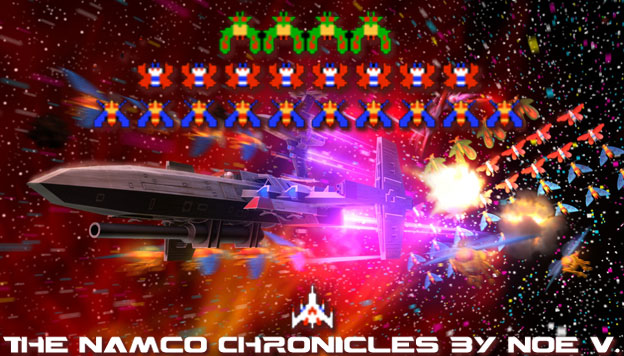
When it came to bold arcade cabinet designs no publisher seemed to hold a candle to Sega. The largest of the Japanese arcade developers had the fortune of having multiple teams working on games at any given time and one R&D unit focused on developing hardware and cabinets for those games. The company could be considered as having mastered the limitations of hardware as far back as 1992. Sega had released a fighter jet simulator called G-LOC. It was the spiritual successor to the wildly popular After Burner. The game was sprite based and released in both a stand up and deluxe sit down cabinet. Yet the company also had some new hardware that they wanted arcades to show off. A premium cabinet called the R360 was available for the bigger arcades. Players were strapped into a pod and enclosed into the simulator.
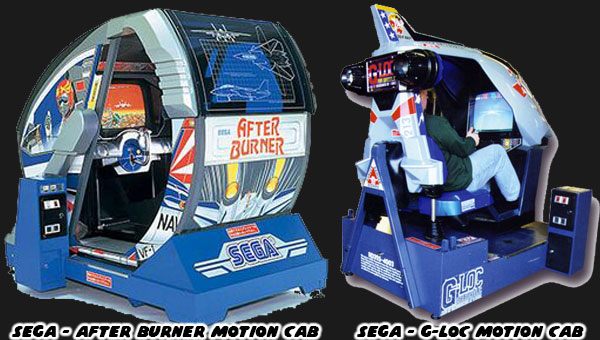
The cabinet could actually spin 360 degrees and invert gamers in multiple axis. The R360 featured a CRT display in front of the player. It did not project a picture onto the inside of the cabinet as with the O.R.B.S. cabinet featured in the previous blog. Not that it mattered because players were so focused on the screen and being flipped upside down that they didn’t notice there was nothing in their peripheral vision.
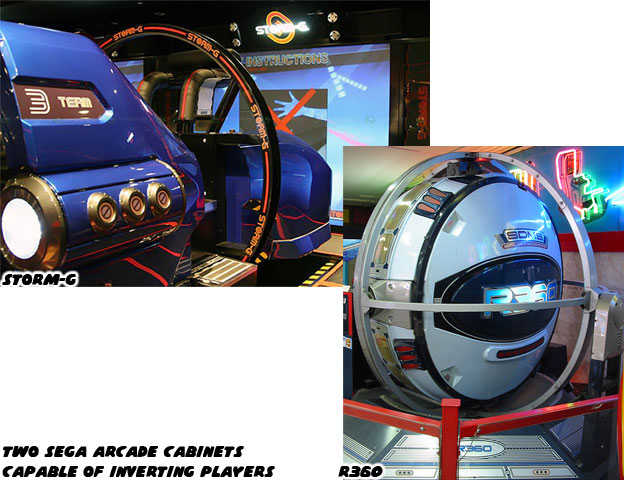
Sega continued the tradition of creating unique cabinets for arcades, especially one-off versions for their company arcades known as Joypolis. In 2009 the studio released another game that inverted players. Storm-G was a futuristic bobsled-type racing game that could spin players upside down. It did not have the free axis of movement of the R360 but it did offer seats for two-players in each cabinet. Interestingly enough this game had nothing to do with Storm Racer G. The car racing game was developed by Chinese studio Wahlap and was published by Sega. For those keeping track of the racing formats Sega had experimented with Storm Racer G had taken a page from the modern Ridge Racer / Burnout school rather than the classic Daytona model. The car designs were nice but nothing that had not been explored in Split/Second or Ridge Racer: Unbounded.
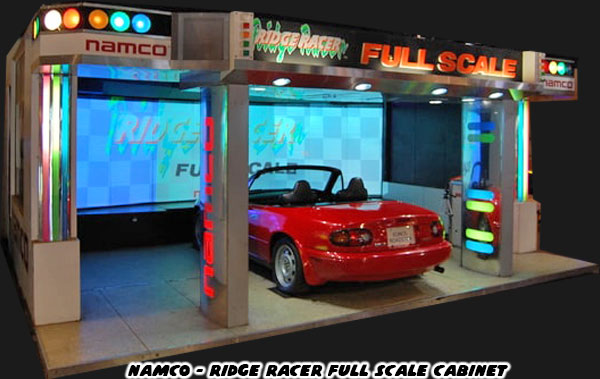
Namco did not have the R&D resources to pull off the inversion cabinets. They did experiment with rumble seats and 4-D attractions (3D + rumble seats) in later years. For the most part Namco challenged Sega with scale and spectacle in their larger cabinets. The theater sized Ridge Racer cabinet from the early ‘90s that featured an actual car that players could sit in was a prototype from the company. The developers were trying to figure out if the processor and LaserDisk that drove the early builds of the game would work with something of that magnitude. The company knew that many arcades could not afford to lose that much space for a game that could only be enjoyed by one player at a time.
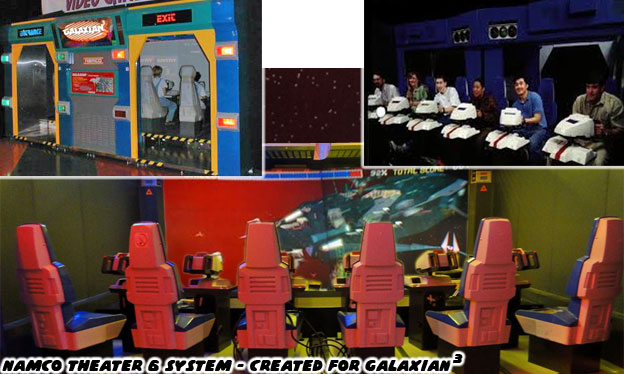
The very next game featuring the theater setup would hold up to six players, all interacting with the massive screen. It was known as the Theater 6 system. In it two Sony projectors overlapped onto one display and played a seamless picture for gamers. The company found that the space shooter was a format that worked very well for the Theater 6 systems. They went into their library of titles and developed a game that could be considered the pinnacle of their space shooter series. It took elements from every science fiction game they had developed up until that point. It had opponents flying in high speed dizzying patterns from Galaga, the steadily increasing challenge of Xevious, the first person shooting elements and electronic music of Solvalou and the curved display and mission cues from Starblade.
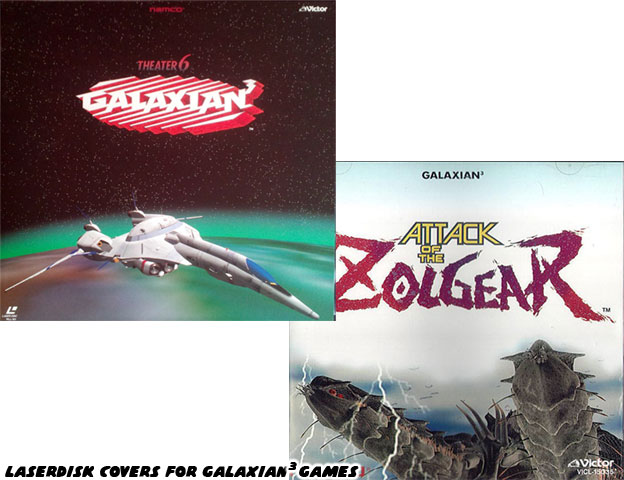
The first title of the new system carried the badge of Namco's first arcade hit Galaxian. The new game was actually a series of adventures that multiple internal teams had been working on for the previous few years. The company did this so that arcade owners that invested in the system would be able to offer the players more than one game each time they visited. Galaxian
3 consisted of three distinct adventures, each with its own timeline, story and both good and bad ending. Galaxian
3 Project Dragoon had appeared first in 1990, predating Starblade. In it audiences flew into an enemy planet controlled by living robot creatures called UIMS (Unknown Intellectual Mechanized Species). Their objective was to take out an enormous laser called the Cannonseed but in order to reach it players had to get through the UIMS space fleet and ground defenses. That adventure was followed by a shorter "bonus" game called
The Rising of Gourb which was a 4-player Playstation exclusive. in which players chased down a titanic flying enemy fortress nicknamed Gourb. The ship was like a flying city, and the final portion of the adventure rekindled memories of the trench run in Star Wars.
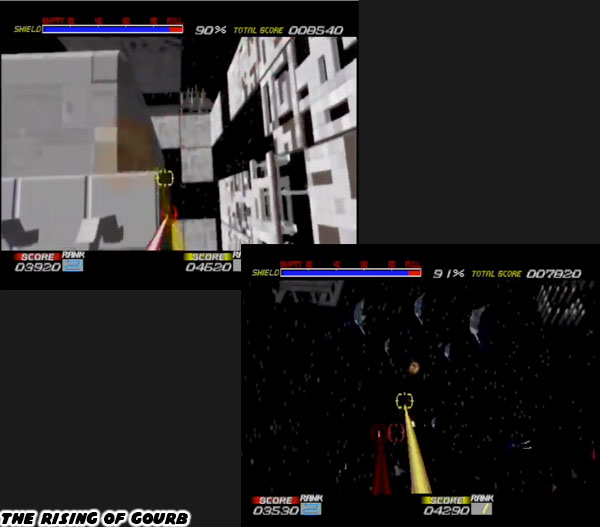
In 1994 the final game, Attack of the Zolgear, debuted. In it players flew to the planet Exia where an enormous creature had emerged from its centuries-long slumber inside the orbiting moon. The backstory was very interesting. For generations the scientists and astronomers on Exia had no idea why their moon Zol had an irregular orbit and constant gravitational fluxes. It turned out that there was a gigantic organism living inside of the planetoid. Once it broke out it made its way to Exia where it intended to destroy the colony. The monster tore through the orbiting defenses easily and survived the entry through the atmosphere. The creature Zolgear was so massive that it could have eaten Godzilla with one bite. Players flew in an enormous ship, the Dragoon-J2, a larger and more powerful version of the original Dragoon, and the gigantic cousin of the GeoBlade right into the heart of the creature. The parasites and defensive organisms within the creature were the size of skyscrapers. It was a perfect blend of science fiction and monster design. Since the first games debuted in 1991
they matched the visual splendor of Stablade.
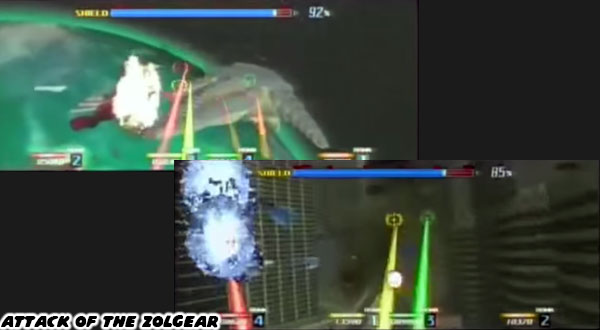
Audiences enjoyed the experience of fighting alongside their friends and sometimes even strangers and seeing which was the best shot. The game could track the progress of each player and display them to the group between mission updates. Best of all each of the Theater 6 games had multiple branching paths so that players could explore different scenarios each time they played the game. Namco spared no expense in creating the experience. Every detail that went into the Theater 6 systems was planned out. Including the shape of the seats, guns and even cabinet facade. The colors, stickers and labels that decorated the cabinet maintained the same theme that was featured within the game itself. Even though players sat side by side they could appreciate the personal touches that brought them into the experience.
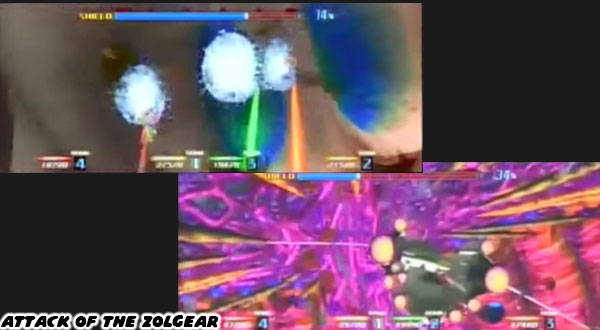
Like Silpheed had done for Sega, Galaxian
3 developed a cult-like following the world over. One
die-hard arcade fan that convinced an arcade owner to sell his Theater 6 system for a private collection. Sure the Theater 6 did not flip players upside down like the R360 cabinet had but it was still an impressive achievement in arcade design. Sega would actually develop racing cabinets that could be linked together to create a display that was almost as massive as the Theater 6 screen. Both companies would tout that they had the superior arcade experience and neither would give an inch during their long running feud. Namco would send out banners for arcade owners to display over the Theater 6 unit that read "The Worlds Largest Video Game." Yet that wasn't the whole story.
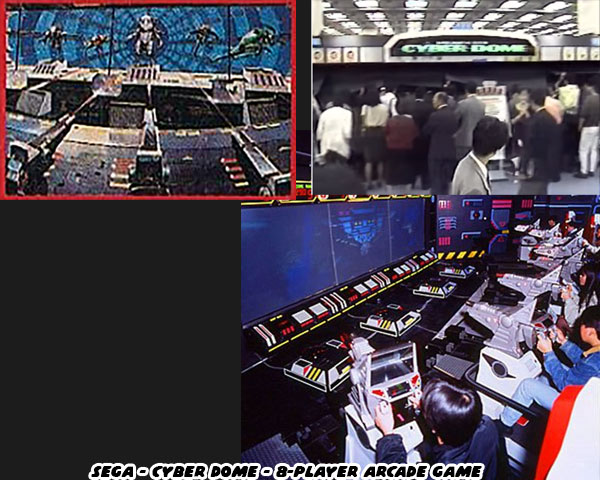
In 1992 Sega released an enormous 8-player cabinet for a game called Cyber Dome. It was touted not only as the largest type shooting game of its kind, but also one of the first AR (augmented reality) games ever released. Players entered a space pod-shaped cabinet lined with a heavy black plastic curtain to stop any ambient light from entering. They sat in light-up chairs with enormous laser guns that were also illuminated. The AR portion was actually a semi-transparent targeting system on the gun that players could use on the gigantic screens. Few arcades had the floor space for such an enormous cabinet. For all intents and purposes it looked like Sega would win the battle of biggest multiplayer space shooter, but the '90s were a wild time for arcade fans.
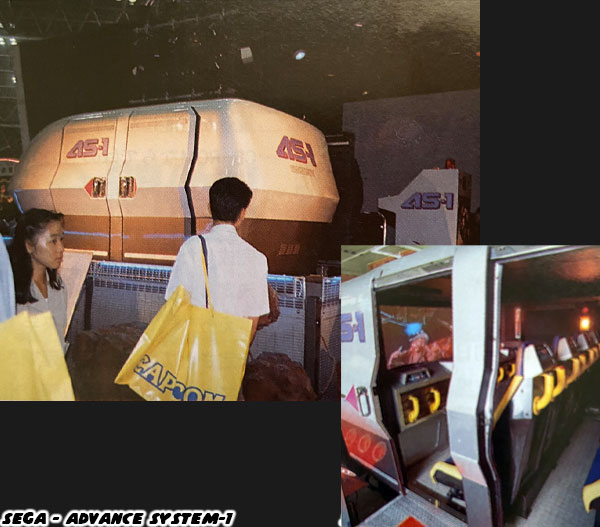
Sega decided to raise the stakes shortly after the release of Cyber Dome. They knew that the gigantic cabinet was only a half measure if they wanted to take the arcade crown from Namco. The next logical step would be to add motion to an arcade game, something that moved more than a single player. The people at Sega were fans of motion rides like Star Tours which had opened in Tokyo Disneyland in 1989. The internal staff at AM5 had experience building motion cabinets for kiddie games, but had their sites set on something much bigger. They unveiled the Advance System-1 (AS-1) cabinet at the AOU trade show in 1992. This would support 8-players interacting with a screen, and laserdisc projector. Michael Jackson would even appear in a game for the platform. An
excellent write up on this rare system is on SegaRetro.com
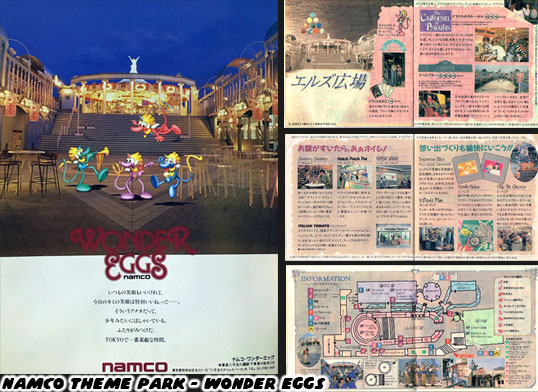
Many arcade manufacturers including SNK, and Capcom knew that getting machines in an arcade was one thing, but being arcade operators would help ensure they would be able to help corner the market. Many studios had their own arcades in various shopping districts all throughout Japan. Each one was packed with video games, prize machines, food kiosks, gift shops, and the like. Namco took the next evolutionary leap in 1992 when they unveiled
the Wonder Egg, later Wonder Eggs theme park in Setagaya, Tokyo. It was the very first theme park owned, and operated by a game studio. It took many elements from Tokyo Disneyland, including live stage shows, costumed staff members, restaurants, dark rides, and attractions. Of course the park also featured traditional midway games, as well as the latest arcade hits from the publisher. The biggest draw were attractions based on classic Namco titles like the Tower of Druaga, and Galaxian.
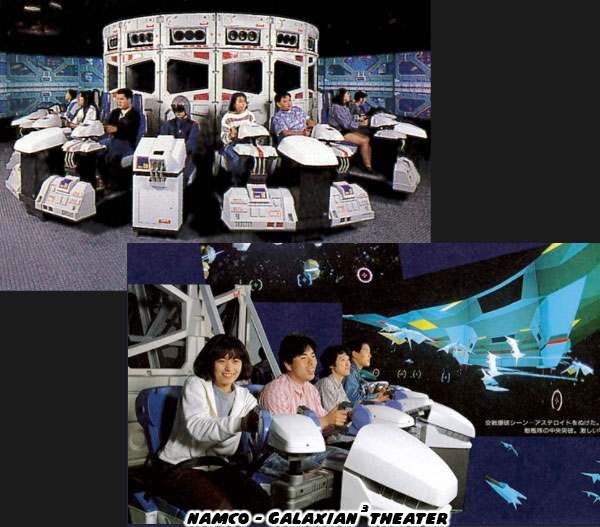
It didn't seem to matter for Namco what their rivals were working on. When it came to sheer volume they knew that they were undefeated. The Galaxian
3 trilogy and Theater 6 system was actually spawned from an even larger attraction built by Namco for the Japan '90 Expo, and then moved to the Wonder Eggs park. The original Project Dragoon was featured in a 360 degree theater capable of seating up to 28 players at one time including a pilot and co-pilot. The game was actually built on a platform that titled in multiple directions to match the action on screen. Later revisions of the game scaled it down for 16 players but even then it was still an enormous feat of engineering. Gamers would be introduced to their particular campaign by a hostess wearing a headset connected to the theater PA.
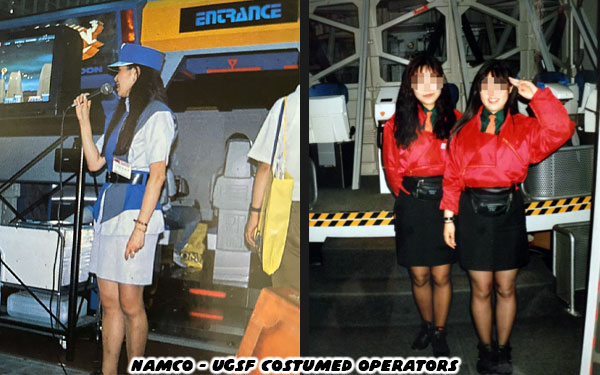
The actors appearing in pre-recorded videos, as well as the employees in the attraction were dressed like the operators from the UGSF, the United Galaxy Space Force, or basically the good guys in Namco canon. It was a brilliant level of detail and execution that would have made the best Disney Imagineers proud. There was no doubt that the employees at both Sega and Namco would visit the local watering hole and take pot shots at each other over a few beers. Whenever the talk of who made the best arcade game ever somebody at Sega would always bring up the R360, or even the AS-1. Then someone at Namco would fire back "too bad it couldn't move 28 people at a time." Then they'd all have a laugh at the expense of Sega and then change the topic to other things.
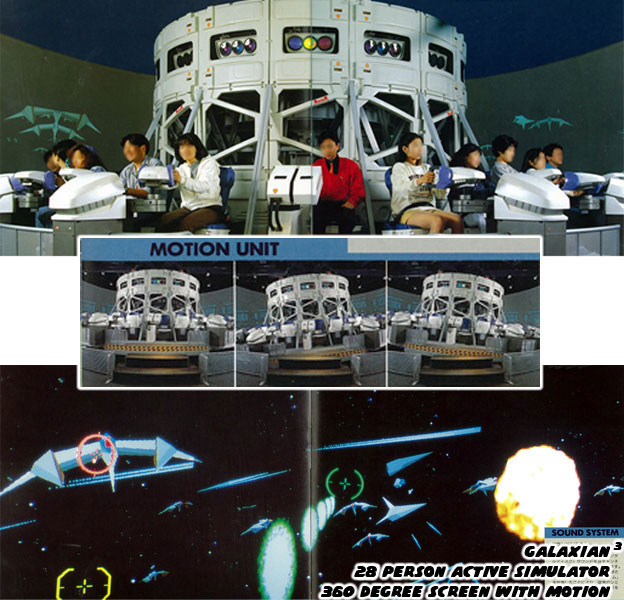
Now imagine that you were a kid living in Japan and had never visited Tokyo Disneyland or any other amusement park in the nation. After playing Project Dragoon, Attack of Zolgear, or even Starblade would you think that you were missing out? Or would you think that it was the park visitors that were missing out? For that matter imagine that you were a kid in the US, the UK or Europe and you happened to have a really good arcade that you could count on.
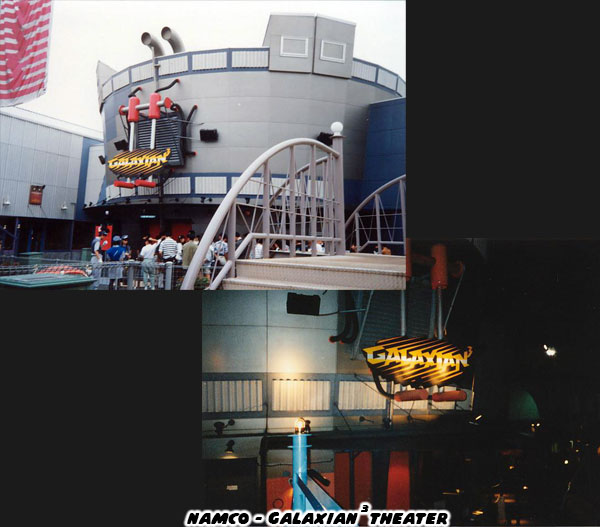
A great arcade would bring in entirely new experiences every few months and hold onto the gems for years. In my honest opinion the best video games had the staying power of the best theme park attractions. The people running things at Disney and Universal had definitely missed out on an evolutionary step in entertainment. Gen-Xers that grew up in the arcade became artists, animators, designers, and producers working in every aspect of entertainment, and not necessarily in the theme park industry. It took some of the biggest park operators decades to catch up, and some companies never did. The heavily arcade-influenced Buzz Lightyear's Astro Blasters, and Toy Story Midway Mania attractions featured in several Disney parks was a way for them to reconnect with an entire generation.
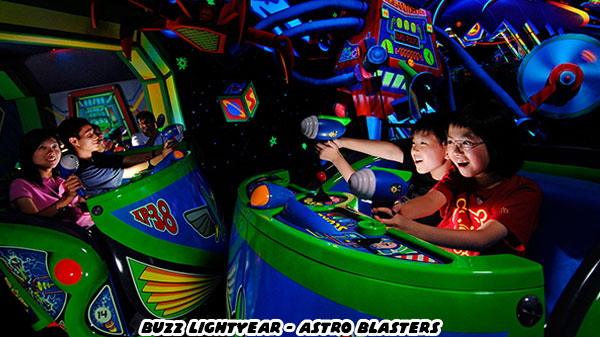
Of course in the best Sega and Namco shooters actually allowed players to choose different paths whereas the Disney attractions were the same ride from beginning to end. There was something to the staying power of Namco compared to many of their western contemporaries. Atari, Bally, Midway and many former arcade titans slowly fizzled out after the '80s. What was it that Namco had going for them? Was it the spectacle of a 28 person gaming theater or the solitary immersion of Starblade? Perhaps it was the addictive gameplay of classics like Galaga and Pac-Man? The secret to the longevity of the company was written in the stars, both figuratively and literally. Please read the next blog to find out why.
As always if you would like to sponsor me
please visit my Patreon page and consider donating each month, even as little as $1 would help make better blogs and even podcasts!


































No comments:
Post a Comment